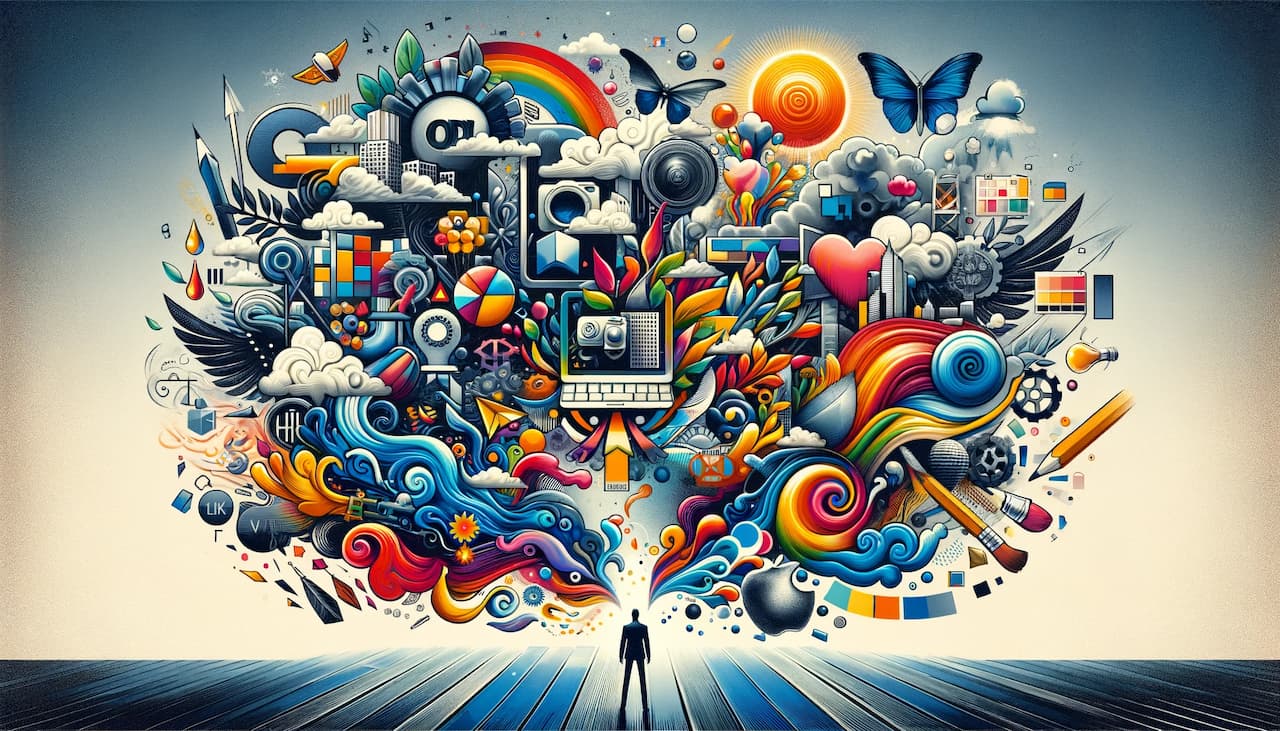Learn about the key role of graphic design in creating a memorable brand identity, and how it goes beyond mere aesthetics to become a cornerstone of strategic branding.
Graphic design is at the intersection of art and business, serving as a powerful tool that shapes the essence of a brand’s identity. It’s not just about creating aesthetically pleasing visuals, but about creating a compelling narrative that embodies the brand’s values, ethos, and aspirations. In a world saturated with countless brands competing for attention, graphic design is a silent ambassador that conveys a brand’s unique story, making it resonate with the target audience.
The Significance of Graphic Design in Branding
At its core, graphic design in branding is about communication. It is a means by which companies can express their individuality, differentiate themselves from competitors and create a lasting impression on consumers. This visual communication goes beyond logos and business cards; it encompasses the entire spectrum of a brand’s visual identity, including websites, packaging, marketing materials, and social media presence. Effective graphic design ensures that each visual element is cohesive, reinforcing the brand’s message and values across all platforms.
Key Elements of Effective Brand Design
- Logo Design: The cornerstone of a brand’s visual identity, a well-designed logo is memorable, timeless, and versatile. It should work across various mediums and applications, from tiny mobile screens to large billboards, maintaining its integrity and effectiveness.
- Typography: The choice of typefaces and how they’re used plays a crucial role in conveying the brand’s personality. Typography can evoke emotion, create personality, and set the tone for the brand’s communication. It’s not just about the font selection but also about the arrangement, spacing, and alignment of text.
- Color Palette: Colors have the power to influence perception and behavior. The color palette chosen for a brand can evoke specific emotions, communicate messages, and influence consumer decisions. Consistent use of colors strengthens brand recognition and enhances the overall brand experience.
- Imagery and Graphics: The use of images, illustrations, icons, and other graphic elements helps to communicate complex messages quickly and effectively. They can illustrate concepts, evoke emotions, and create a visual language that complements the brand’s narrative.
The Impact of Effective Design on Brand Perception
Well-executed graphic design not only sets a brand apart from its competitors, but also affects how the brand is perceived by the audience. It can elevate a brand by making it appear professional, reliable, and of high quality. Conversely, poor design can have the opposite effect, undermining brand credibility and driving potential customers away. Effective design contributes to a positive brand image, builds trust, and encourages interaction, which ultimately contributes to the success and longevity of a brand.
In the field of branding, graphic design is an indispensable tool that, if used effectively, can turn a business into a beloved brand. It is a combination of skill and strategy, where every color, shape, and line is imbued with meaning. The ultimate goal is to create a brand identity that is not only visually appealing, but also strategically sound, resonates with the target audience, and stands the test of time.
Understanding Graphic Design in Branding
Graphic design is not just about creating visually appealing products; it is a strategic tool that brings a brand’s identity to life, making it understandable and recognizable to consumers. By combining elements such as typography, color, and imagery, designers create a visual narrative that reflects the brand’s values, mission, and personality.
Key Elements of Effective Brand Design
- Logo Design: The visual keystone of a brand’s identity.
- Typography: Crafting a voice that speaks volumes about the brand.
- Color Palette: Evoking emotion and connection through color.
Strategies for Developing a Strong Brand Identity
| Strategy | Description | Impact |
| Consistency | Maintaining a cohesive visual language across all mediums. | Builds recognition and trust with the audience. |
| Emotional Connection | Creating designs that resonate on an emotional level. | Enhances brand loyalty and engagement. |
| Innovation | Pushing creative boundaries to stand out. | Positions the brand as a leader and innovator. |
Frequently Asked Questions
Why is graphic design crucial for brand identity?
It visually communicates the brand’s values, differentiates it from competitors, and fosters emotional connections with the audience.
How does color impact brand perception?
Color can evoke emotions, influence decisions, and improve brand recognition by up to 80%.
What role does typography play in branding?
Typography shapes the brand’s voice, influences readability, and can significantly affect the brand’s overall impression.
Explore more about the transformative power of design in our detailed guide on object-oriented PHP for developers. Stay updated with the latest trends in educational services to enhance your learning journey.
